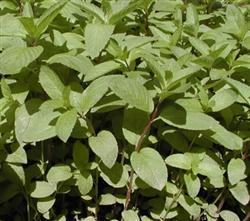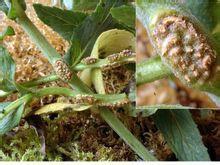Breeding techniques for summer propagation of peppermint

1. Choose a good breed. The varieties with strong growth, strong disease resistance, high brain content and pure fragrance should be selected in summer propagation breeding of peppermint. Asia 39 and Fuyou 1 are generally selected. two。 Breeding time. Generally speaking, the growth of mint in the first crop goes into the flower bud stage. The south is around June and the north is around July. 3. Prepare the ground. Select fields with high terrain, good drainage, deep soil layer, loose and fertile fields, sandy loam is better, intensive cultivation. Combined with soil preparation, apply sufficient base fertilizer, apply soil miscellaneous fertilizer 3000~5000kg and nitrogen, phosphorus and potassium compound fertilizer 50kg every 667m2. 4. Breeding methods. ① cuttage propagation. The stalks of mint from the first stubble were cut into long segments of 30cm, and were planted on the whole border surface according to row and plant spacing 30cm × 5cm. ② rhizome propagation. After the first mint harvest, the underground rhizomes were planed and planted according to row and plant spacing 30cm × 5cm. 5. Field management. ① watering. After mint planting, the soil moisture should be maintained and should be watered frequently to facilitate the rooting and emergence of mint. ② weed control. Before emergence of mint, 100 g 60kg of herbicide to water was sprayed evenly on mint field, which could effectively control many kinds of weeds. After peppermint seedlings, the weeds that have not been removed can be removed manually. ③ topdressing. Every 667 square meters, 100 g peppermint yield increasing agent was sprayed evenly into 300 times solution. Spray once every 10 days, three times in a row. When peppermint seedlings were high 10cm, topdressing once. Urea 10kg and potassium dihydrogen phosphate 5kg were topdressing every 667m2. ④ pest control. The main diseases of mint are spot blight, rust and so on, which can be controlled by conventional methods at the initial stage of the disease. 6. Harvest. Mint can be harvested when it grows in late October. First cut off the aboveground stems and leaves, and then dig out the underground stems to carry out propagation and planting.
- Prev

Comprehensive control techniques of mint rust
Peppermint is a well-known medicinal plant at home and abroad, the whole plant is used as medicine. It is produced in Jiangsu. In recent years, with the adjustment of the rural planting structure and the needs of the market, the planting area of peppermint in various parts of Jiangsu has been expanded, but in the process of growth and development, it is often damaged by rust, which not only reduces the yield seriously, but also affects it.
- Next

Field cultivation techniques and pot culture methods of crabapple flowers
Begonia flower is endemic to China. Growing in the plains and mountains of 50 to 2000 meters above sea level, it can be artificially introduced and cultivated as deciduous small trees. Begonia likes light, is cold-resistant, avoids waterlogging, avoids too wet air, is more resistant to drought, and is lax in soil quality and moisture requirements.
Related
- Fuxing push coffee new agricultural production and marketing class: lack of small-scale processing plants
- Jujube rice field leisure farm deep ploughing Yilan for five years to create a space for organic food and play
- Nongyu Farm-A trial of organic papaya for brave women with advanced technology
- Four points for attention in the prevention and control of diseases and insect pests of edible fungi
- How to add nutrient solution to Edible Fungi
- Is there any good way to control edible fungus mites?
- Open Inoculation Technology of Edible Fungi
- Is there any clever way to use fertilizer for edible fungus in winter?
- What agents are used to kill the pathogens of edible fungi in the mushroom shed?
- Rapid drying of Edible Fungi

